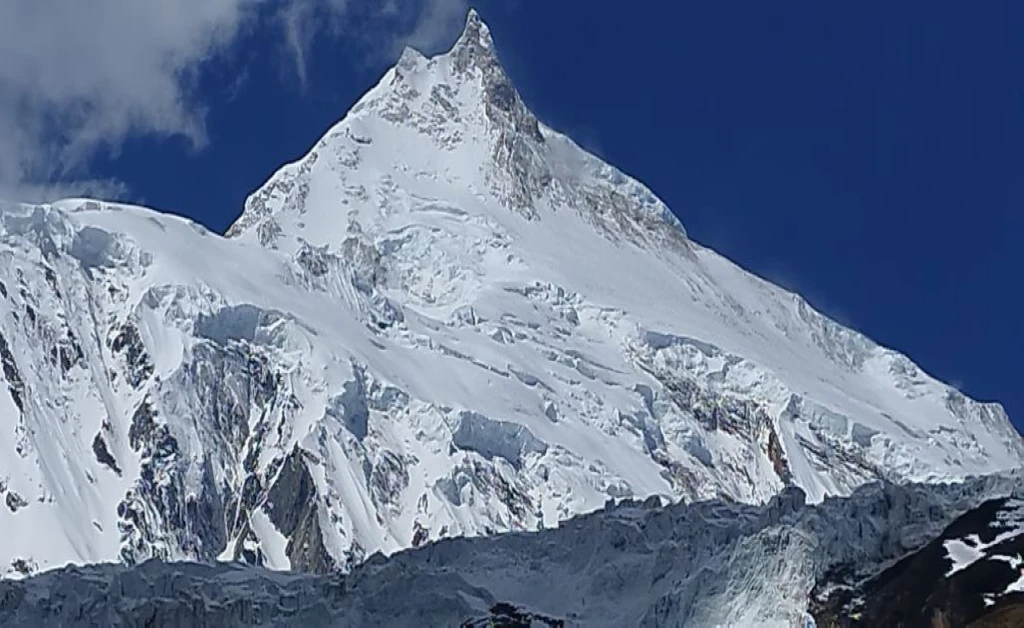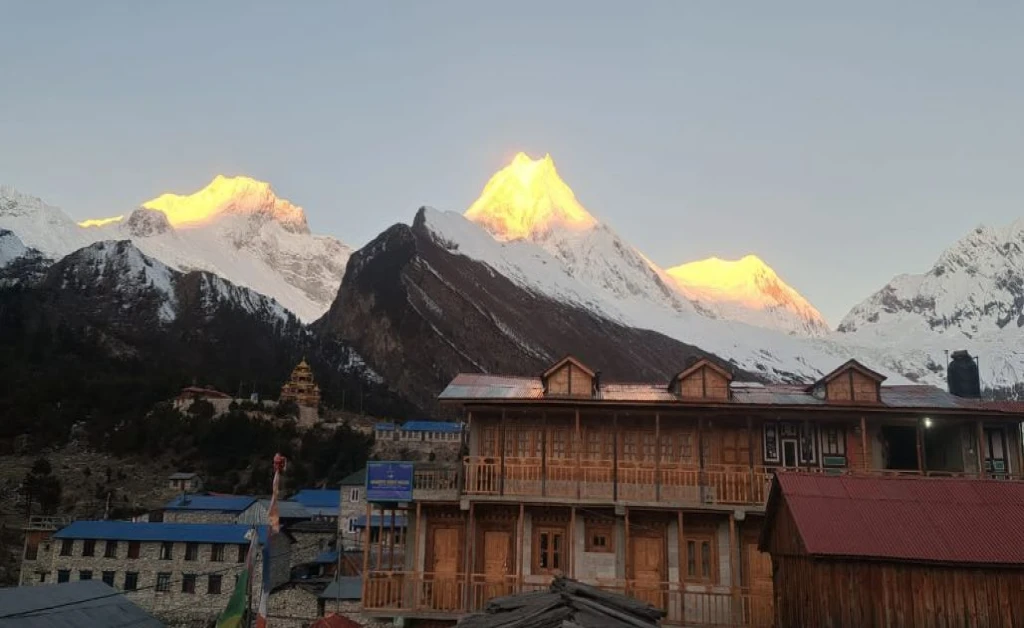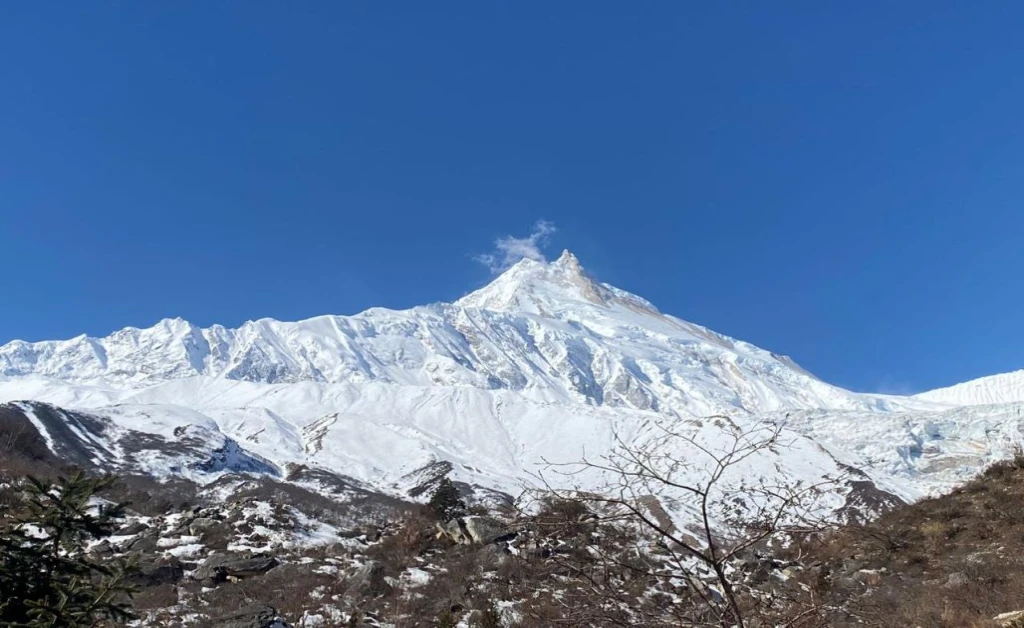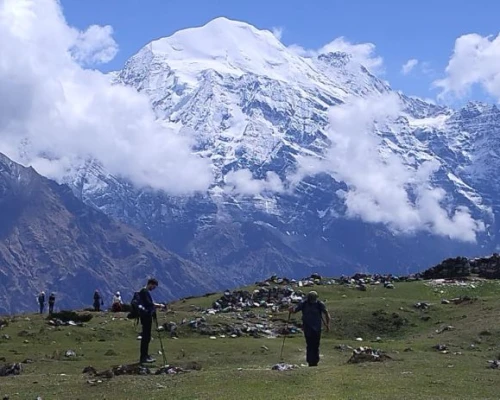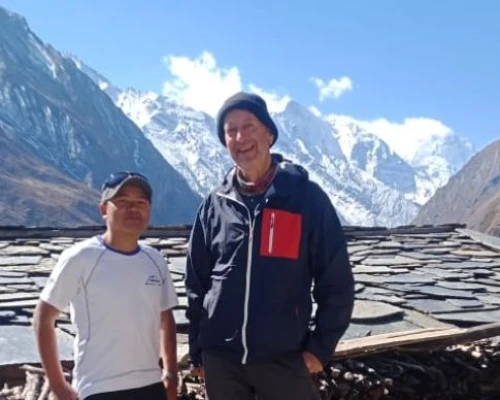Manaslu Rupina La Pass Trek is considered to be a high-altitude trek that takes you on a true remote trail through the Manaslu region of Nepal and ultimately ends above 4,720 meters with Rupina La Pass. Here you will be treated with 360° views of the Manaslu and Himalchuli Range, along with Ganesh Himal. You will see the Gurung and Tibetan Buddhist cultures and experience extraordinary dynamic landscapes – from warm, beautiful forests to green, colourful meadows and distinct local villages that remain largely untainted by tourism.
Rupina La Pass Trek in Manaslu Highlights
- Remote and less travelled trekking routes in the Manaslu region.
- Difficult and high climbing 4,720-meter pass.
- Excellent views of Manaslu, Himal Chuli, Boudha Himal, Ganesh Himal and Langtang mountain ranges.
- Trekking through culturally rich Gurung and Tibetan villages.
- A wide range of forests, including rhododendron trees, pines, oak, birch and many other types of flora.
- Encounter a diverse range of wildlife and a chance to see snow leopards and Himalayan black bears.
- Cultural opportunities with monasteries and communities.
- The chance to visit the sacred Tsum Valley and its monasteries.
- Suspension bridges across rivers and unstable landslide-prone areas.
About Rupina La Pass Trek With Tsum Valley
The 18 days Rupina La pass Trekking offers relatively remote trekking in Nepal and includes some of the most spectacular scenery you will find in Nepal while also allowing you to experience the effects of Tibetan culture, especially in the more remote regions of Nepal. If you are considering trekking in a more remote and less populated part of Nepal, and also looking for an adventure that is truly local, then the 18-Day Rupina La Pass Trek with Tsum Valley is for you. Most people in the region maintain their Tibetan identities through dress, culture, and language.
The Rupina La Pass Trek with Tsum Valley takes in quiet alpine forests and wild scenery while allowing you to sleep overnight in remote villages as you follow the Budhi Gandaki River up to Rupina La Pass. In addition to intense trekking, you are also likely to be surrounded by astonishing views of all three major peaks, including Manaslu (8163m), Himalchuli (7893m), and Bouddha Himal (6672m).
Wildlife and diversity of flora add a great deal of enjoyment to the experience. The Trek to Rupina la Pass Itinerary begins at Bhaluwa, and you actually have to walk past charming Gurung villages like Barpak and Kharka to reach Rupina La Phedi.
Crossing the Rupina La Pass is very rewarding not only because of good mountain views but also the sense of accomplishment.
The best seasons for the Manaslu Rupina la Pass trek are spring and autumn, when the skies are likely to be clear and comfortable weather. But don't let that stop you from trekking; Mountain Rock Treks can arrange this trek for any season of the year. We can arrange a good guide to help you, and we will adjust the itinerary to fit your holiday schedule.
Combined Itinerary of Rupina La Pass with Tsum Valley Trekking
Crossing the Rupina La Pass in the Manaslu region with Manaslu Rupina La Pass Trekking is an incredible adventure, especially when combined with the Tsum Valley Trekking. This route is remote and often off the beaten path, offering you a unique glimpse into untouched landscapes and authentic local cultures.
- Rugged trails that challenge you but reward with stunning views.
- Peaceful villages where traditional Tibetan Buddhist culture thrives.
- A chance to explore newly introduced trekking routes that few have experienced.
Combining Rupina La Pass with Tsum Valley Trekking is the best way to fully immerse yourself in this pristine region. You’ll enjoy diverse scenery, from dense forests to high alpine meadows, and cross the thrilling Rupina La Pass at 4,720 meters.
Optional Combo To Choose of Manaslu Larkya La Pass With Rupina La Pass Trek in 2025, 2026
If you want an alternative to the Rupina La Pass with Ganesh Himal trek, check out the optional combo of a Manaslu Larka La Pass and the Rupina La Pass Trek in 2025 or 2026.
Starting from Kathmandu, this very remote and much less travelled arrangement will allow you to cross not one but two amazing high passes (Larkya La and Rupina La) on one fantastic trek.
This combo of Rupina La Pass Trekking 18 Days gets you the best of both worlds, the incredible best of both worlds: the spectacular, Iconic landscapes and rich culture of the traditional Manaslu Circuit, the challenging and awe-inspiring views of the Rupina La Pass. You will traverse some eye-popping terrain through lush forests, quaint and charming local villages, alpine meadows, stunning vistas, and, perhaps most importantly, an authentic view of life beyond the trekker's trail.
Ganesh Himal Base Camp Visit with Rupina La Pass Crossing: Both Off the Beaten Path
Ganesh Himal Base Camp – 4,200 Meters
Located within the central Himalayan range, access to the Tibetan border can lead to spectacular views of peaks such as Ganesh I, II, III, and IV. The trek includes remoteness through Tamang and Gurung villages, dense forests, and alpine meadows, all of which affect the animals and culture. Few visitors trek through the area, allowing authentic and very peaceful surroundings.
Located in Base Camp, for climbers, the area will be acclimatizing to climb Mount Ganesh (7,429m) and has a camping area.
Rupina La Pass – Crossing at 4,720 Meters
This pass offers fabulous 360-degree views of very high peaks, including Mount Manaslu (8,163m), Himal Chuli (7,893m), Ganesh Himal (7,422m), and Boudha Himal (6,672m). The trek passes through a diverse range of different types of landscapes, from fertile valleys and alpine forests past glacial lakes near the Buddha Himal Glacier to traditional Tibetan-style villages of the Tamang, Gurung, and Tibetan communities.
The trek to Rupina La Pass can be done individually or alongside the Manaslu Circuit and Larkya La Pass for a longer trek.
Tsum Rupina La Pass Trekking Tibetan Culture and Tradition Insights
Ethnic Groups: The Tsumbas
- Indigenous peoples of Tibetan ancestry inhabiting Tsum Valley.
- They speak Tsumke and Tsumba dialects, both related to the Tibetan language.
- They have a very traditional lifestyle that is relationally very close to the land, the natural environment, and spirituality.
Religion and Spirituality
- Clearly influenced by Tibetan Buddhism, with the introduction of Buddhism from Tibet by Guru Padma Sambhava in the 8th century.
- Rachen Gompa and Mu Gompa are important monastery sites.
- Monks and nuns are engaged in meditation and ritual practice; over 200 monastics are living in the valley.
- Spiritual practices consist of prayer flags, mani stones, stupas, and community prayer wheels.
- Rituals such as mask dances and black-hat dances are carried out to purify the valley and protect it.
Culture and Traditions
- Enchanting Tsum Valley Commonly called the "Valley of Peace" for its commitment to the non-violence toward all beings (including insects and plants).
- Rich in ancient Himalayan arts, traditions, and wisdom, including Buddhist philosophies and teachings.
- Every month, women come together to make devotion by fasting and chanting mantras at prayer wheels.
Festivals
- Festivals have a spiritual basis and consist of prayer, music and dance, and community sharing.
- On many festival occasions, mask dances depict Buddhist teachings and are made part of purification rituals.
- Tsumba celebrations reflect both views of Tibetan Buddhism and the associated local celebrations.
Traditional Dress and Life
- Traditional dress is based on Tibetan styles, often made of wool or yak hair, which stays warm in the cold.
- People living in the Tsum Valley live in stone and wood houses, in a Tibetan style and with Tibetan elements including the flat roof and carved windows.
- People's lives are based on farming, the pastoral part of life with animals (yaks, sheep), and the gathering of local medicinal herbs such as Yarsagumba.
Language and Arts
- Tsumba language is a dialect spoken in the Tibetan language family and has an ancient legacy of linguistic preservation.
- Arts included Thangka, wood carving, and religious sculpture.
- The use of oral narrative and song also contributes to cultural transmission.
- More in detailed here about the History and Culture of Manaslu Tsum Valley Trek.
Best Time, Weather and Temperature
Month | Avg Temp (°C) | Min Temp (°C) | Max Temp (°C) | Weather Conditions |
January | -6 to 5 | -10 | 8 | Snowy, harsh cold, trails icy |
February | -4 to 6 | -8 | 10 | Cold, snow in high passes |
March | 0 to 10 | -5 | 12 | Cold, beginning of spring |
April | 3 to 15 | 0 | 18 | Clear skies, blooming rhododendrons |
May | 5 to 18 | 3 | 20 | Warm, clear, ideal for high passes |
June | 7 to 20 | 5 | 23 | Start of monsoon, humid |
July | 8 to 18 | 6 | 21 | Monsoon peak, landslide risk |
August | 8 to 18 | 6 | 20 | Monsoon continues, leeches |
September | 6 to 17 | 4 | 20 | Post-monsoon clear skies |
October | 3 to 15 | 0 | 18 | Crisp air, dry weather |
November | -1 to 10 | -4 | 12 | Clear but colder nights |
December | -4 to 6 | -8 | 10 | Cold, snow starts falling |
Spring Season (March to May)
Spring (March, April, May) is by far the most suitable period for Rupina La Pass with Tsum Valley Trekking. With the start of March, the warm weather will be quite favorable, the landscape will definitely have been changed with various wildflowers in bloom. Days begin to be longer and the sunlight reigns, thus, it’s convenient for hiking. However, don’t forget to take warm clothes with you because the mornings and the nights are still very cold.
Autumn (September to November)
Autumn season with its good, stable weather and clear skies, is also a trekking season suitable for the Rupina La Pass. This time, you can breathe fresh air, the sky is bright, and the snow-capped peaks come into view quite clearly. Nevertheless, the possibility of snowfall still exists at high passes, for example, Rupina La (4,610m).
Summer/Monsoon (June to August)
This season puts aside very few opportunities at the Rupina La Tsum Valley Trek for various reasons. Ever since the beginning of June, the heavy downpour has been constant, thus causing trails to become extremely slippery, the appearance of leeches, and even landslides also occur. The wet weather and high humidity resulting from the rains are the reasons that make walking very uncomfortable and less of an enjoyable experience.
Winter (December to February)
Due to the extreme cold, the above 3,000-meter-high mountains easily turn into a dangerous place full of very heavy snow. At these obscure times, the comfort of proceeding through the trail is also much more doubtful due to snow residuals, and some of the lodges at higher elevations might be closed, so it is not a season that people usually opt for unless they are both properly equipped and experienced.
